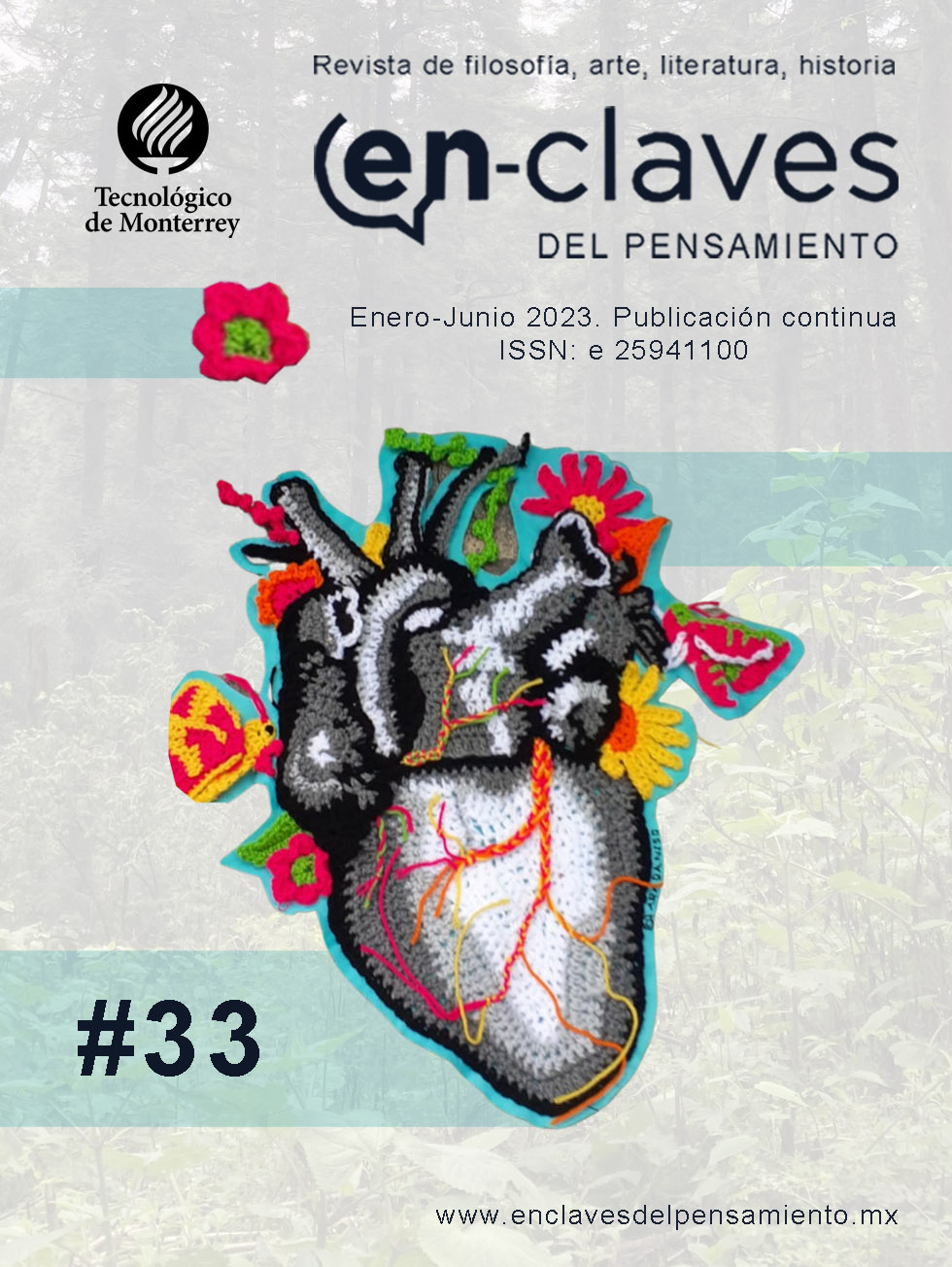Shame and Norms of Action in the Clinical Encounter: An Essay on the Phenomenology of shame
Main Article Content
In this article, I intend to think about vulnerability through the lens of shame in the clinical encounter. I want to suggest that shame is a kind of vulnerability that is revealed through the body’s visibility and that this awareness entails the development of strategies diminishing the body’s visibility. To account for this form of vulnerability –of which I become aware through experience and that cannot be reduced to passivity–, I will first discuss the ontological and phenomenological perspectives on vulnerability. Thus, I will start with the remarks made by Judith Butler on bodily vulnerability and the descriptions that have been made from Edmund Husserl’s phenomenology on the limits of the body’s capacity. I will do this to retake each perspective’s strong points, namely, Butler’s remarks raise the question of how we assume vulnerability, whereas phenomenology gives a face to these descriptions by insisting upon its character of a lived experience. Based on this, I will second argue that a phenomenology of shame (particularly when focused on the clinical encounter) makes it plain that vulnerability is an experience I live, and that it makes me behave in some ways as to avoid the exposure to which my own body’s visibility subjects me.
Behnke, Elizabeth. “No hay caminos, hay que caminar. Violaciones de la conciencia cinestésica y caminos hacia su recuperación”. En Las fronteras del sentido. Filosofía y crítica de la violencia, ed. Agata Bąk, 87-104. Toluca: Sb Editorial, 2021.
Butler, Judith. “Bodily Vulnerability, Coalitional Politics”. En Notes Toward a Performative Theory of Assembly. Cambridge: Harvard University Press, 2015.
Butler, Judith. “Rethinking Vulnerability and Resistance”. En Vulnerability in Resistance, eds. Judith Butler, Zeynep Gambetti y Leticia Sabsay, 12-17. Durham: Duke University Press, 2016. DOI: https://doi.org/10.2307/j.ctv11vc78r.6
Butler, Judith. Precarious Life: The Powers of Mourning and Violence. Nueva York: Verso, 2004.
Butler, Judith. Vida precaria: el poder del duelo y la violencia. Trad. de Fermín Rodríguez. Buenos Aires: Paidós, 2006.
Carel, Havi. “‘If I Had to Live Like You, I’d Kill Myself’: Social Dimensions of the Experience of Illness”. En Phenomenology of Sociality: Discovering the We, ed. Thomas Szanto y Dermot Moran, 173-186, Nueva York: Routledge, 2016. DOI: https://doi.org/10.4324/9781315688268-11
Díaz Romero, Paula. “Sobre el reconocimiento de la enfermedad como experiencia subjetiva y su impacto en la Salud Pública”. Revista de Bioética y Derecho. Perspectivas bioéticas núm. 55 (2022), 3-22. https://doi.org/10.1344/rbd2022.55.32562. DOI: https://doi.org/10.1344/rbd2022.55.32562
Dolezal, Luna. “Shame Anxiety, Stigma and Clinical Encounters”. Journal of Evaluation in Clinical Practice 28, núm. 5 (2022), 1-7. https://doi.org/10.1111/jep.13744. DOI: https://doi.org/10.1111/jep.13744
Dolezal, Luna. “The Horizons of Chronic Shame”. Human Studies (2022), 1-22. https://doi.org/10.1007/s10746-022-09645-3. DOI: https://doi.org/10.1007/s10746-022-09645-3
Dolezal, Luna. The Body and Shame: Phenomenology, Feminism, and the Socially Shaped Body. Maryland: Lexington Books, 2015. DOI: https://doi.org/10.1017/S2753906700001352
Escribano, Xavier. “Poética del movimiento corporal y vulnerabilidad: una reflexión desde la fenomenología de la enfermedad”. Revista Co-herencia 12, núm. 23, (2015), 71-88. https://doi.org/10.17230/co-herencia.12.23.3. DOI: https://doi.org/10.17230/co-herencia.12.23.3
Heinäma, Sara, y James Jardine. “Objectification, Inferiorization, and Projection in Phenomenological Research on Dehumanization”. En The Routledge Handbook of Dehumanization, ed. Maria Kronfeldner, 309-325, Nueva York: Routledge, 2021. DOI: https://doi.org/10.4324/9780429492464-chapter20
Husserl, Edmund. Ideas relativas a una fenomenología pura y una filosofía fenomenológica. Libro Segundo: Investigaciones fenomenológicas sobre la constitución. Trad. Antonio Zirión Quijano, 5ª ed. Ciudad de México: Fondo de Cultura Económica, 2005.
Ingala, Emma. “Cuerpos vulnerables y vidas precarias. ¿Un retorno de lo humano en la filosofía política de Judith Butler?”. Daimon. Revista Internacional de Filosofía 5, (2016): 879-887. https://doi.org/10.6018/daimon/268741. DOI: https://doi.org/10.6018/daimon/268741
Lazare, Aaron. “Shame and Humiliation in the Medical Encounter”. Archives of Internal Medicine 147, núm. 9 (1987), 1654-1655. https://doi.org/10.1001/archinte.1987.00370090129021. DOI: https://doi.org/10.1001/archinte.1987.00370090129021
Leder, Drew. The Absent Body. Chicago: The University of Chicago Press, 1990.
Martínez Ruiz, Rosaura. “Collective working-through of trauma or psychoanalysis as a political strategy”. Psychoanalysis, Culture & Society 25, núm. 4, (2020), 594-611. https://doi.org/10.1057/s41282-020-00198-x. DOI: https://doi.org/10.1057/s41282-020-00198-x
McRuer, Robert. Crip Theory: Cultural Signs of Queerness and Disability. Nueva York: New York University Press, 2006.
Nussbaum, Martha. Hiding from Humanity: Disgust, Shame, and the Law. Princeton: Princeton University Press, 2004.
Parrini, Rodrigo, y Ana Amuchástegui. “Sujeto, sexualidad y biopoder: la defensa de los militares viviendo con VIH y los derechos sexuales en México”. Estudios sociológicos XXVII, núm. 8, (2009). http://www.redalyc.org/articulo.oa?id=59820678004.
Quepons, Ignacio. “Cuerpo vulnerable y conciencia del valor: desarrollos descriptivos en fenomenología husserliana”. Signos filosóficos XXIII, núm. 45 (2020): 96-123.
Quepons, Ignacio. “Vulnerability and Trust: An Attempt at Phenomenological Description”. PhaenEx, 13, núm. 2 (2020), 1-11. https://doi.org/10.22329/p.v13i2.6220. DOI: https://doi.org/10.22329/p.v13i2.6220
Ramírez Velázquez, Josefina. “¡No soy enfermiza! Representación social del control/exclusión que opera en la fábrica”. Revista LatinoAmericana de la Salud en el Trabajo 4, núm. 1, (2004).
Sartre, Jean-Paul. L’être et le néant: essai d’ontologie phénoménologique. Paris: Gallimard, 1943.
Sontag, Susan. Illness as Metaphor. Nueva York: Farrar, Strauss & Giroux, 1978.
Steinbock, Anthony J. Moral Emotions. Reclaiming the Evidence of the Heart. Evanston: Northwestern University Press, 2014. DOI: https://doi.org/10.2307/j.ctv2dswt7
Toombs, Susan Kay. “The Meaning of Illness: A Phenomenological Approach to the Patient-Physician Relationship”. Journal of Medicine and Philosophy 12, núm. 3 (1987), 219-240. https://doi.org/10.1093/jmp/12.3.219. DOI: https://doi.org/10.1093/jmp/12.3.219
Venebra, Marcela. “A ras de la carne: en el límite de la violencia y el sentido”. En Las fronteras del sentido. Filosofía y crítica de la violencia, ed. Agata Bąk, 121-142. Toluca: Sb Editorial, 2021.
Venebra, Marcela. “Fenomenología de la sangre. El autosacrificio como mito del cuerpo”. EN-CLAVES del pensamiento, 0(31), (2022) e490.
https://doi.org/10.46530/ecdp.v0i31.490 DOI: https://doi.org/10.46530/ecdp.v0i31.490
Zahavi, Dan. Self and Other: Exploring Subjectivity, Empathy and Shame. Oxford: Oxford University Press, 2014. DOI: https://doi.org/10.1093/acprof:oso/9780199590681.001.0001
Article Details

This work is licensed under a Creative Commons Attribution-NonCommercial 4.0 International License.













